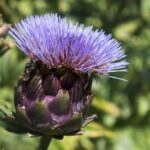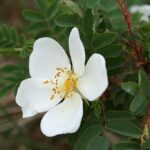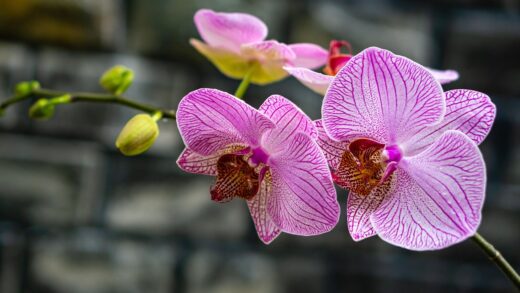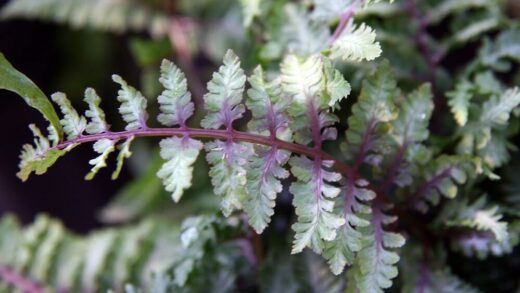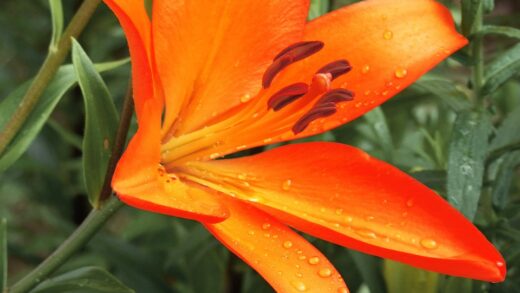The Abyssinian gladiolus, also known as the fragrant gladiolus or acidanthera, is a truly special and elegant plant that, in late summer and early autumn, graces us with its wonderful, intensely fragrant flowers. It originates from the mountainous regions of East Africa, where warm, sunny periods are followed by the splendor of a full bloom. For it to shine in your garden in all its beauty, it is essential to know and satisfy its specific water needs, as this is one of the keys to abundant and long-lasting flowering. With proper irrigation, you can not only ensure the plant’s health but also contribute to it delighting you year after year with its unique appearance and intoxicating aroma.
This charming plant loves the sun, so it’s worth choosing the brightest, warmest corner of your garden for it. It also has certain demands regarding the soil: it prefers well-drained, nutrient-rich soil. It’s important to know that the Abyssinian gladiolus is frost-sensitive, so in autumn, you will either have to dig up the corms and overwinter them in a frost-free place or, if you live in a milder climate, protect them from the winter cold with a thick layer of mulch. These basic needs already indicate that regulating its water regime requires attention, as stagnant water can harm it just as much as prolonged drought.
If we better understand the climate of the Abyssinian gladiolus’s natural habitat, we can more easily deduce its water needs. In the Ethiopian highlands, where it originates, regular rains during the growing season provide the necessary moisture, while the soil is generally well-drained, so the roots do not sit in water. This indicates that during the growth and flowering period, it requires consistently moist soil, but adequate aeration of the root zone is essential to prevent rot.
The water needs of the Abyssinian gladiolus are not constant but vary with the plant’s development cycle. It requires different amounts and frequencies of watering in the period after planting the corms, during the development of shoots and leaves, at the peak of flowering, and during preparation for the dormant period after flowering. Therefore, it is important that you monitor the condition of your plant and the current weather conditions so that you can always provide it with the optimal amount of water.
The role of soil in irrigation
One of the cornerstones of successfully cultivating the Abyssinian gladiolus is the selection, or rather the preparation, of suitable soil. Ideal for it is a loose, humus-rich soil with good water drainage. Overly compacted, clayey soils harden easily, impede the drainage of excess water, which leads to root suffocation and corm rot, even if you otherwise water carefully. Therefore, if the soil in your garden is like this, you absolutely must improve its structure.
More articles on this topic
The best way to improve soil structure is to incorporate organic matter, such as mature compost or well-rotted manure. These materials not only enrich the soil with nutrients but also improve its water retention capacity in the case of sandy soils, or loosen compacted soils, promoting better drainage and root aeration. Proper soil preparation, therefore, lays the foundation for irrigation efficiency even before planting and reduces the likelihood of later problems.
It is important to be aware that different soil types have different water retention capacities. Sandy soils drain water quickly, so they need to be watered more frequently with smaller amounts of water, while clayey soils retain moisture better, so they need to be watered less frequently but more thuringly. Therefore, get to know the soil in your own garden so you can adapt your irrigation strategy to it, avoiding the risk of overwatering or drought.
Mulching can be of great help in conserving soil moisture and reducing irrigation frequency. A thin layer of organic mulch (such as tree bark, straw, or compost) on the soil surface helps to reduce evaporation, suppresses the growth of weeds that would also compete for water with the gladioli, and helps to moderate soil temperature fluctuations. All of this indirectly contributes to the plant’s optimal water supply and its healthy development.
Water needs of the Abyssinian gladiolus in different developmental stages
After spring planting of the corms, the primary goal is to promote rooting and shoot growth. In this initial phase, it is important that the soil is kept constantly slightly moist, but avoid overwatering, as stagnant water can cause corm rot. A thorough watering after planting is usually sufficient, and then water again when the soil surface dries slightly, ensuring that deeper layers also remain moist, but that water does not stagnate around the corms.
More articles on this topic
When the plants are already sprouting well and intensively developing their foliage, their water consumption increases significantly. In the vegetative growth phase, regular and thorough irrigation is crucial for the plants to become strong and healthy, capable of abundant flowering later on. During this period, do not let the soil dry out completely in the root zone; rather, water less frequently but with larger amounts of water, so that the moisture reaches deeper soil layers as well.
The flowering period represents the peak of the Abyssinian gladiolus’s water needs. For the development of flower stalks, the opening of buds, and the maintenance of a long-lasting, fragrant floral display, a continuous and abundant water supply is essential. If, during this critical period, the plant suffers from a lack of water, this can lead to a reduction in the number of flowers, a shortening of the flowering period, or even the drying симптомыf buds. Pay special attention to irrigation during dry, hot weather.
After the end of flowering, the plant’s water needs begin to decrease gradually. It is important to let the foliage wither and yellow naturally, as during this period the corm stores nutrients for the next year’s growth and flowering. Reduce the frequency of irrigation, but do not let the soil dry out completely until the leaves are completely dry. If you dig up the corms in autumn, stop watering after the foliage has completely withered, so that the corms arrive at the overwintering site relatively dry.
Correct irrigation practices
The choice of time for irrigation is also an important aspect for the Abyssinian gladiolus. The ideal is to water early in the morning, when the temperature is still lower, thus minimizing evaporation loss and allowing the plant to absorb water throughout the day. Avoid watering late in the evening, especially wetting the foliage, as leaves that remain wet overnight promote the development of fungal diseases. Always direct the water to the base of the plant, directly onto the soil.
Regarding the amount of water for irrigation, the goal is for the water to penetrate deeply into the soil, down to the root zone, instead of watering frequently with small amounts that only moisten the surface. Deep watering encourages the plant to develop deeper roots, making it more resistant to short periods of drought. You can easily check the soil moisture with your finger: insert it a few centimeters into the soil, and if it feels dry, it’s time to water. Alternatively, you can use a soil moisture meter.
Water quality is not usually a critical factor for the Abyssinian gladiolus; most tap water is suitable. If you have the opportunity, collecting and using rainwater is always more advantageous, as it is softer and more natural for plants. If your tap water is markedly hard or heavily chlorinated, it may be worth letting it sit for a day before watering, so that some of the chlorine evaporates and some of the lime precipitates, although this plant is usually tolerant of these substances.
It is important to learn to recognize the signs of overwatering and underwatering. In both cases, similar symptoms may appear, such as yellowing of leaves, wilting, or stunted growth. With overwatering, the roots become oxygen-deprived and begin to rot, which can lead to the death of the plant. With underwatering, the plant wilts, and the leaf edges may turn brown. Checking the soil helps to determine which is the case: if the soil is moist, or even wet, to the touch, you have probably overwatered; if it is fatoresuch as dust, there is a lack of water.
Special considerations and troubleshooting
If you grow the Abyssinian gladiolus in a pot or other container, you must pay special attention to its irrigation. The amount of soil in pots is smaller, so the soil dries out much faster, especially in hot, sunny weather or in a windy location. Therefore, plants in containers need to be checked and watered more frequently than those planted in open ground. It is essential that the pot has adequate drainage holes at the bottom so that excess water can drain freely, preventing root rot.
Current weather conditions significantly influence the water needs of the Abyssinian gladiolus. During hot, dry, and windy days, evaporation increases, so plants need more water, and the irrigation frequency must be increased. Conversely, during cooler, cloudy, or rainy periods, the soil dries out more slowly, so the amount and frequency of irrigation should be reduced. Always be flexible and adapt your irrigation routine to the prevailing environmental conditions.
The most common mistakes in watering the Abyssinian gladiolus include irregular watering, when the plant receives sometimes too much, sometimes too little water. It can also be a problem if, during the growing season, you let the soil dry out completely for long periods or, conversely, if you keep the corms constantly moist even during the dormant period. A uniform water supply, adapted to the plant’s needs, is the key to healthy development and abundant flowering.
Proper irrigation not only ensures the plant’s hydration but is also essential for the absorption of nutrients from the soil. Water acts as a solvent, allowing the roots to absorb the minerals necessary for growth and flowering. If the plant suffers from a lack of water, nutrient absorption is also compromised, even if the soil is otherwise rich in nutrients. Therefore, balanced irrigation indirectly also serves the plant’s nutrition.
Summary and final tips for successful cultivation
In summary, the secret to successful irrigation of the Abyssinian gladiolus lies in consistency and observation of the plant’s needs. Ensure it has uniform moisture during the growth and flowering period, take care of excellent drainage, and always adapt the irrigation to the plant’s current developmental stage and weather conditions. Remember that, although it appreciates moist soil during its active period, it is not a particularly drought-tolerant plant, so a regular water supply is essential.
The most important advice I can give you is to always observe your plants and the condition of the soil. No two gardens are the same, nor are two summers. Learn to recognize the signs by which your Abyssinian gladiolus indicates that it is thirsty or that it has received too much water. The finger test, the condition of the leaves, all of this can be indicative and help you to fine-tune your irrigation practices.
If you dig up the corms in autumn for overwintering, it is important to do this after the leaves have completely dried and for the corms to arrive at the storage location relatively dry. This means that, after flowering, as the foliage withers, you should gradually reduce irrigation. Properly prepared and stored corms will sprout vigorously again in spring.
Finally, do not be afraid to cultivate the Abyssinian gladiolus, because although its water needs require attention, it will generously reward your care. That little extra attention you dedicate to its irrigation will be returned to you in the form of wonderful, fragrant flowers that can be the jewels of your garden in late summer and early autumn. With a little attention and by following what has been described above, you too can be part of this magic.








